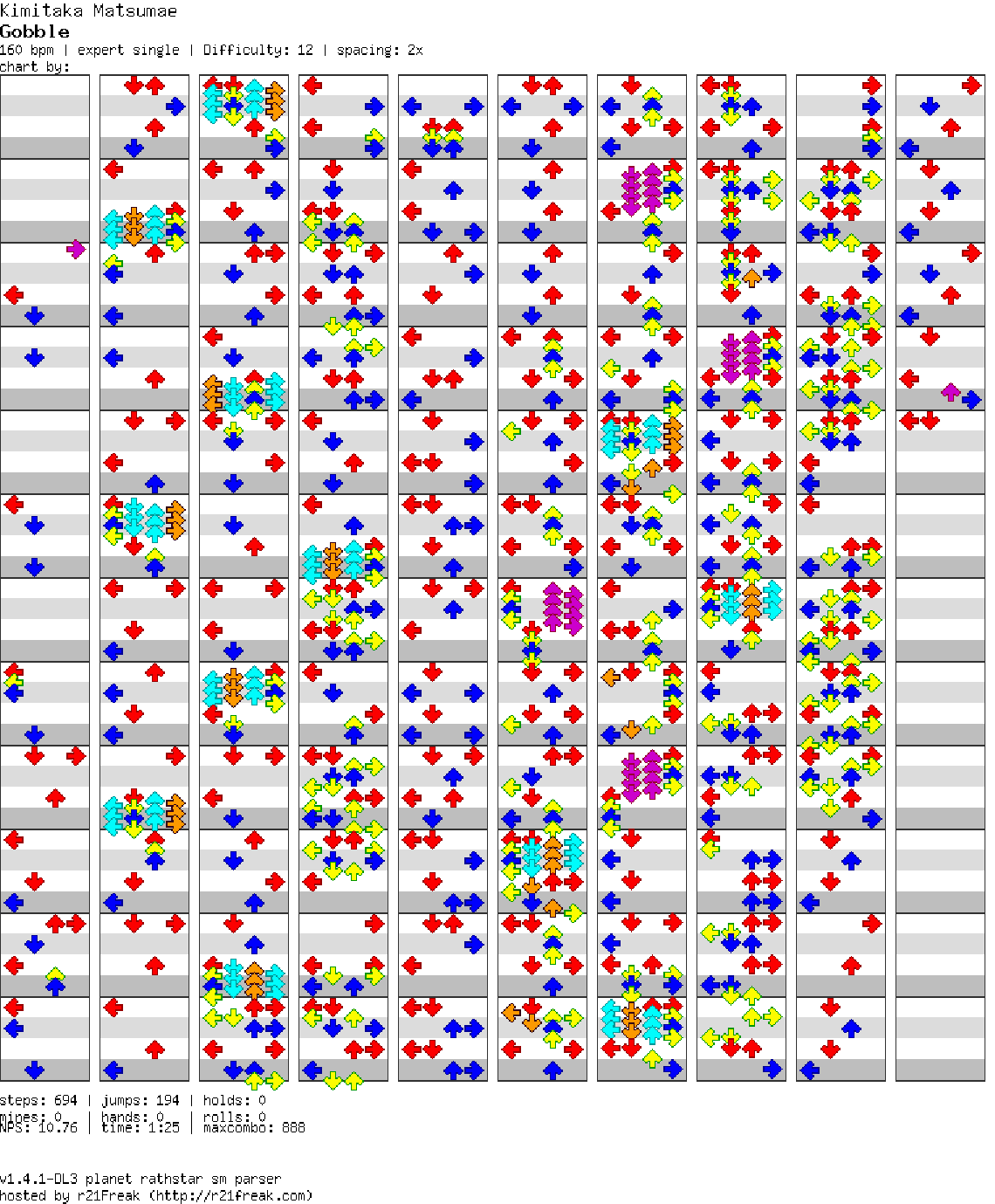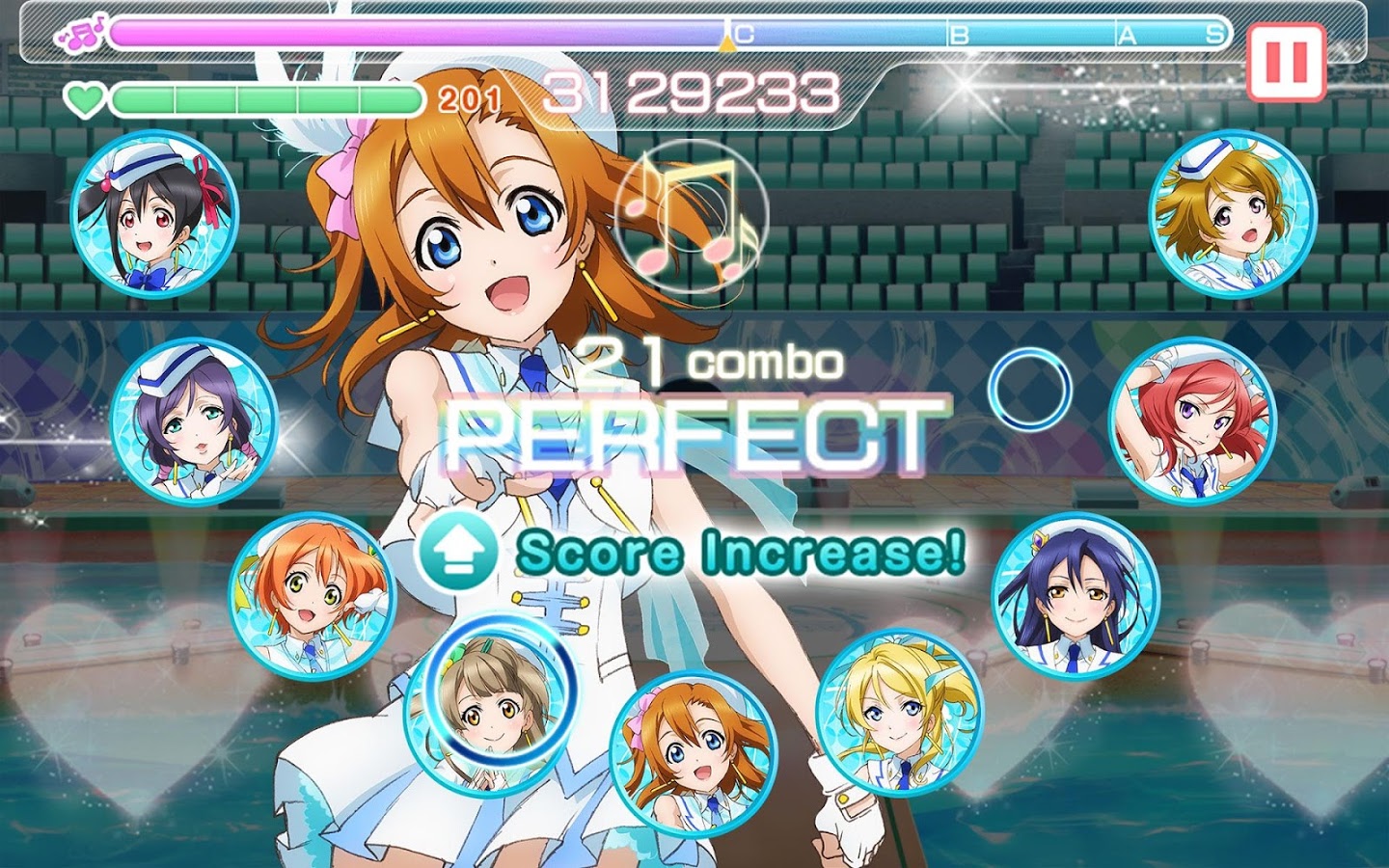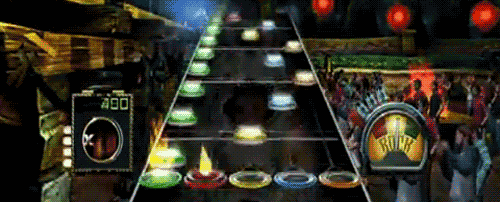Things to Think About When Making a Rhythm Game
Article by: Hanabarger
Who hasn't dreamed of being a rock star? Who hasn't, at some point, daydreamed about being a famous singer or musician? While very few of us will ever actually reach that point, all of us can experience the thrill of music through rhythm games. But what makes a rhythm game good, and how can the way players interact with the music change their experience? This week, we're going to expand our scope from designing levels to designing and planning for a specific genre as a whole. We'll look at the two different types of rhythm games, how to make note charts for them, and what kind of music you should include in your game.
Give Yourself to the Rhythm
Generally speaking, there are two types of rhythm games: ones where you play with the music, and ones where you play against the music. Examples of games where you play with the music include Guitar Hero, Rock Band, and DJ Hero.

In these games, the player feels involved with the music. In Guitar Hero, you simulate the act of playing a guitar, and it tends to feel similar to the real thing (as long as you aren't an actual guitarist.) These types of games also tend to have the music stop or cut out when you make a mistake, again reinforcing the idea that what you are doing has an impact on what's happening in the game. These types of rhythm games come primarily out of Western developers.
In games where you play against the music, the music is the basis of a challenge. In games like Hatsune Miku: Project DIVA, the notes are simply a challenge that's only connected to the music by means of rhythm. You don't necessarily control any of the singing or instruments. Another example would be Beat Hazard.

Beat Hazard is a top-down twin-stick shooter where you pilot a spaceship powered by music. In this game, your ship's fire rate, the spawn rate of enemies, and the intensity at which they attack you is based on the track that's currently playing. So what happens when, mid-song, the music gets really quiet for a brief period? Your guns shut off and the enemies grind to a halt. It's very jarring, and puts the player in a state of near-helplessness as they wait for the song to pick back up. In games like these, the player is beholden to the music rather than working with it. Due to the more difficult nature of these games and the skills they reinforce (memorization and repetition), we tend to see these types of rhythm games come out of Eastern developers.
When planning your game, you should consider how the player interacts with the music. Playing with the music is a very different experience from playing against the music. Understanding how your design works will help you understand how to make note charts, and later on you will know what kinds of power-ups or skills you want to include, if any.
The input method of a rhythm game also heavily influences note charts and song selection. For Dance Dance Revolution, players use a mat laid on the floor with arrows on it as a controller. If you've ever tried to play DDR with a controller, you'll find the experience to be incredibly different. Not only do you feel even less like you're dancing, but you'll find some note combinations that are easy on the dance mat are much harder on a directional pad. Likewise, if you try to play Project Diva on a dance mat, you'll be hard-pressed to finish a song on any difficulty above 'Normal'. Whatever input method you choose, you'll want to make sure that it's conducive to rhythm.
The Joy of Composition A note chart is essentially the 'sheet music' for a rhythm game. It's what comes down the screen as the player plays, or the order in which the notes appear. How a designer writes a note chart varies from person to person. It's the kind of thing that takes a ton of iteration to get just right, but here are some things to keep in mind.

Depending on the input method the player will use to play songs, you need to figure out what part of the song you'll use as a guide. For instance, in Guitar Hero, the player uses a plastic guitar as a controller. If someone were to write a note chart for that input method, it'd be ridiculous if the notes matched the rhythm of the drums or vocalist. Likewise, it'd be incredibly strange for a karaoke game to have the player humming the bass-line instead of singing the lyrics.
However, it's pretty unlikely that an independent developer (or anyone other than Activison or Harmonix employees) will be developing using that input method. If that's the case, how does one decide what part of the song to match their notes with? It's actually pretty simple: whatever is at the forefront of the song.
In most cases, the part of the song we consider the "forefront" is the melody. Often times, this is the vocalist or lead guitarist. Sometimes it can be a little more muddy, as is often the case for certain sub-genres of electronic music. If you're having trouble finding the forefront of the song, just close your eyes and let your ears pick out the loudest or most interesting piece. If you feel like you've been focusing on the lyrics too much, you can shift your focus to some part of the instrumentals (or vice versa.)

Make sure that the player is always doing something, and if you can help it, make sure they're doing something new. Games that go against the music sometimes have the advantage here, as they don't have to follow the music so strictly. For instance, in Love Live: School Idol Festival, the designers have players mirror patterns they've done previously in the song so as to keep things interesting.
What's Your Jam? Some games have their music genres planned from the get-go, but you may find that your game doesn't necessarily fit in to one particular genre. A strength of games that have the player working against the music is their versatility in song selections. Games like Osu! and the Japanese arcade game Chunithm have incredibly vast and diverse song lists, while Guitar Hero is more or less locked into rock music (or genres that heavily utilize guitar in general.) If you don't want to tackle all the genres at once, you can split songs into two categories: solo and ensemble. These are very broad strokes based on the amount of people involved in the performance of the song. This basically puts rock, metal, and country in the ensemble category, and pop, electronic, and rap in the solo category. Songs in the solo category all tend to have electronic tendencies, giving them an broad cohesiveness. Songs in the ensemble category tend to be composed of multiple artists, each on their own instrument (usually some combination of guitar, bass, vocals, drums, and the occasional keyboard.)
Keep in mind the complexity of songs you're picking. You'll want to have a good spread of simple songs to complex songs, but not too much at either end. For a good example of this spread, look at the track listing from Guitar Hero 3. It starts with Foghat's 'Slow Ride' and ends with Dragonforce's 'Through the Fire and Flames'.

If you haven't seen/played either of those, look at them both on each difficulty. You'll see that, on easy, 'Slow Ride' is painfully simple, while 'Through the Fire and Flames' is incredibly complex. This disparity persists through all difficulties, consistently demonstrating the difference between the easiest song and the hardest. All the songs in between ramp up, but they do so in a way that averages toward the middle. Not only is this good progression for single player, but it means that there are plenty of songs that the players will consider 'fair game' for multiplayer.
The Curtain Falls Make no mistake, rhythm isn't a dead genre. It's resting, waiting for the perfect game to bring it back into the limelight. The indie scene is brimming with great rhythm games like Audiosurf, Riff Racer, Thumper, and Super Hexagon. In the mobile world, we have Love Live: School Idol Festival. Though it's often overlooked because of its aesthetic and premise, it boasts a player base of over 20 million players worldwide as of 2015. If you have any interest in developing rhythm games, I would strongly encourage you to innovate and create the world's next smash hit.
